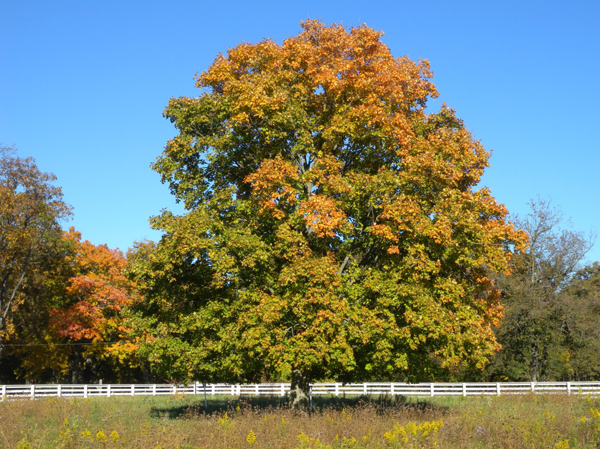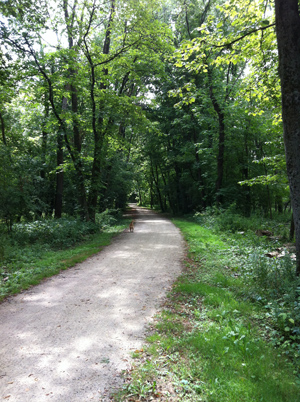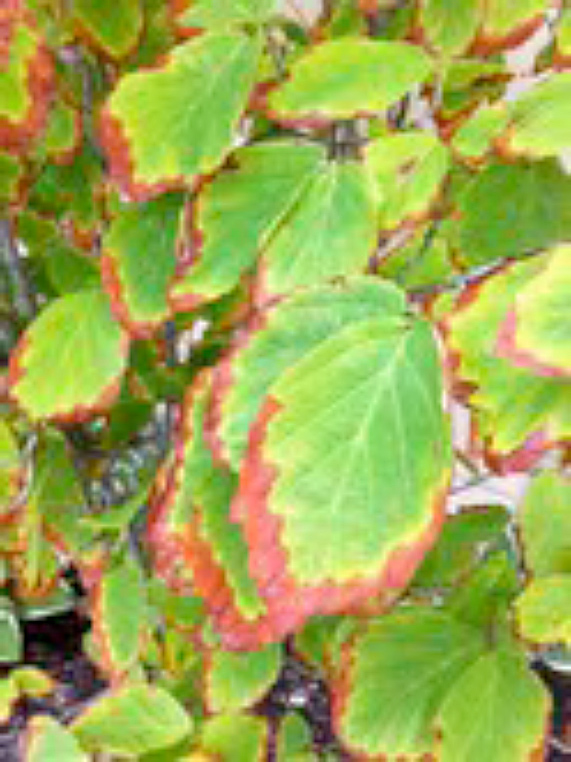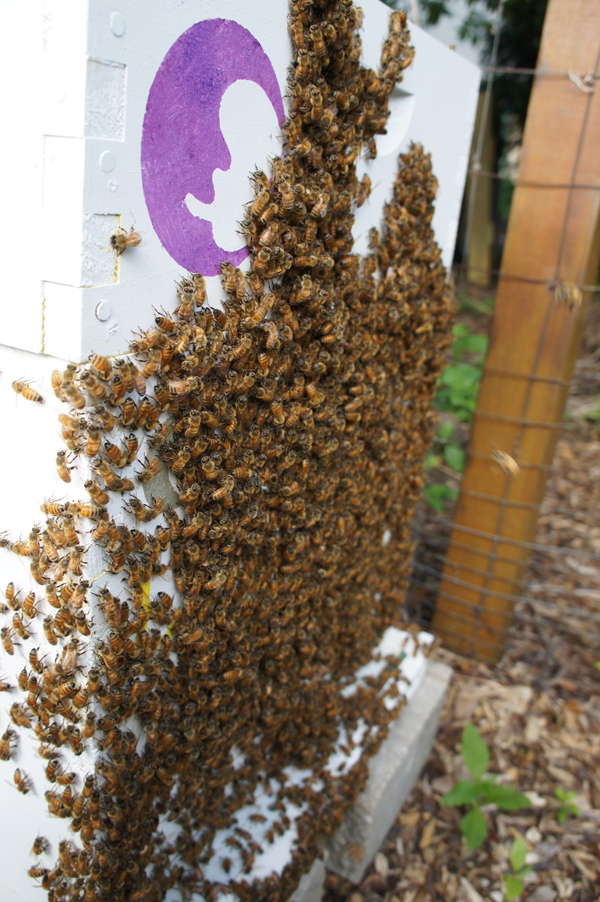March Wisdom from the Trees 2014
/Tree of the Month • White and Paper Birches
Betula papyrifera, Betula alba
by Lesley Bruce Smith
ISA Certified Arborist
All photos: Lesley Bruce Smith©2014
A Betula papyrifera, Paper Birch located in Northern Door County, WI on the edge of a meadow.The Birch tree is a favorite among North American trees. It likes the colder and more moderate temperatures along the northern shores of the Great Lakes. The English language is filled with poems referencing birch trees, I am sure because their distinctive powdery smooth pale colored bark make them a standout in the forest and the landscape. Even in their favorite environment, Birch trees do not live very long, only about 80 years, and are pioneer species. This means they are the first ones to establish themselves into areas of land that have yet to create forest, like the once newly glaciated plains of the midwest, or freshly burned prairies of the central states. Birch trees find their homes on the edges, the edges between prairie and forests, the edges of water, the edges of short lived (grasses) and long lived (forest) species, the edges of light.
Their Sanskrit name, bhrag, meant shining and I am sure it is because these distinctive species are full of light.A Betula papyrifera, Paper Birch or Canoe Birch located in N. Door County, WI in summer on the edge of a meadow. They have airy crowns that dapple the sunshine on their light colored bark with beautiful artistry. That light colored bark contains a substance known as betulin, a crystalline substance making it pale as well as waterproof. President Thomas Jefferson wrote to Meriwether Lewis recommending that he use birch bark paper for his field notes as it was “less liable to injury from damp than common paper”. However, birch trees have been serving humans long before writing. The buds and sap and even the bark could be eaten, and early New Englanders fermented birch sap for beer. They have been used to make shelter, clothing, cooking and eating utensils, dolls, baby cradles, and of course, because of the waterproof nature of the bark, the beautiful canoe. Longfellow has immortalized this in his epic poem Song of Hiawatha:
A White Birch along the shore of Northern Lake Michigan in January against an electric blue sky.“Give me of your bark, O Birch-tree!
.................
I a light canoe will build me Lay aside your cloak, O Birch Tree! Lay aside your white-skin wrapper!
..................
And the tree with all its branches
Rustled in the breeze of morning,
Saying with a sigh of patience,
‘Take my cloak, O Hiawatha!’”
Their are many kinds of Betula species including the Yellow, Silver, Downy, Water, Asian, and one of our Chicago hardy favorites, the River. The Birches have a long history of use and association with sacred rites and ceremonies, as their “light” makes them somewhat magical, mysterious and extremely well loved.
“One could do worse than be a swinger of birches” wrote Robert Frost. As swingers of Birches, we agree.
The White Birch’s cousin, the Riverbirch is a favorite of ours because it is hardy in the Chicago area and has a beautiful cinnamon colored exfoliating bark that gives interest all year long. After this winter, any plant that can look good in the winter gets extra points. Read more about it in September 2012 tree of the month.
Sweet gifts from the trees
Backyard Wisdom by Gilbert A Smith
ISA Certified Master Arborist
Ojibwa woman gathering Maple sap for sugaring.
photo credit from: http://firstpeoples.org/wp/maple-syrup-threatened-by-climate-change/The celebration is a month later this year than last but it is finally here. When the daytime temperature is in the 40s and at night it descends into the 20’s a uniquely American festival begins, lasting a month or more. Some of the Native Americans who first celebrated it, called it Sugar Moon Festival during which they did a Maple Dance, you guessed it, it’s Maple Sugaring time.
Maple Sugaring is not an European import. The Algonquin people cut a “v” shape into Maple trunks and used a reed to drain the sap into wooden tree trunk buckets. They showed the Europeans how to concentrate the sugars by putting hot stones into the sap to boil off the water or by letting the sap freeze and removing the ice.
The chemistry behind this phenomena is not completely understood but here is my version. In the summer, the tree converts the sun’s energy into sugar and stores it in the trunk and roots, as a starch. In late winter the tree converts the starch back to usable sugar. The higher concentration of sugar inside the tree creates osmotic pressure, pulling water from the soil and pushing it throughout the tree.
"Sugar Bush" is the term used for a high concentration of Sugar Maples.
Sugar Bush at the Ryerson Conservation Area, Riverwoods, ILThe tree uses this sugar energy to grow or respire and like people the tree gives off carbon dioxide when it respires. I’ll bet you thought trees only breathed in carbon dioxide and breathed out oxygen. You’re right, when a tree is photosynthesizing it uses carbon dioxide and gives off oxygen. However, at night when there is no sun, the tree is also using oxygen and giving off carbon dioxide.
What we have then, is carbonated sap, much like a carbonated drink, when the temperature rises this time of year it forms bubbles that create pressure which drives the sap up into the tree tops and out any cuts or holes in the sapwood, which is just below the bark. When it cools at night the carbon bubbles shrink, creating more vacuum that pulls water from the soil. This wonderful process only happens in late winter when the temperature goes just below and just above freezing.
Here are a few other fun facts about Maple sugaring. If it is done responsibly it doesn’t hurt the tree because it uses only about 7% of the sap. Each year an average Sugar Maple will produce 17 gallons of sap and it takes about 40 gallons of sap to make one gallon of Maple syrup. Maple Syrup is regulated and has to contain 66% sugar. It also contains natural phenols and anti-oxidants and 300 different flavor compounds that make it unique and not duplicatable. There are many imitations that contain mostly corn syrup and which the Quebecois refer to as “syrup de poteau” or syrup tapped from telephone poles. Abolitionists used only Maple Sugar because slaves were used to make cane sugar.
So the next time you have pancakes with real Maple Syrup you will have a story to tell about the sweet gift of the trees and the American Indians.
The Buzz on Bees
Mother Nature's Moment
by Lesley Bruce Smith ISA Certified Arborist
Bees on newly installed sugar in feeder tray, excited to get some extra energy before the next polar blastIt has been a tough winter for all of us, especially for the honey bees. I am so grateful for my bee mentor, Larry Studer, who came over in January, (yes January!) and helped me check into my two hives. I was worried about one of them because I did not hear any activity in the hive. Sadly, we discovered my strongest hive had died of starvation;(. Not because they did not have enough food stores/honey, but because the temperatures had been so cold for so many consecutive days they could not move around enough to access the honey they had. It was a grievous thing to open the hive and find the cluster of bees all dead and frozen. This is a year for the stout of heart, both bees and beekeepers.
With Larry’s wise help we transferred the extra honey stores in the failed hive to my hive that was still thriving. This was a hive we had established late in the summer 2013 with a new nucleus (nuc), which is comprised of several (6-8) frames filled with honey and laden with honeybees and their queen. At that time, we also added bees and honey from my existing stronger hive which was absolutely packed with both. In this way we were able to get the new hive off to a strong start. It is still a mystery and a wonder to me how those wise little honeybees sort it all out. I did not harvest any honey last year in an effort to keep my hives healthy and strong. During this winter I was very glad for that decision.
Opening the live hive in January to discover a very healthy colony! The bees don’t ever sleep.When Larry came in January, because of my concern, he did something I would have never had the courage to do on my own, as a novice beekeeper. He opened the hive on a 20F day when the snow was falling, to see what was going on and to install some feeder trays with clumped sugar he had prepared before hand to provide supplemental food. What a sad thing to open the hive and find the once vibrant cluster of bees all frozen and dead. This was just before the second polar vortex creeped down from the fridged north.
Beginning the transfer of honey stores to the living hive on the left from the dead hive on the right. The “dirt” on the snow are the bees from the frozen hive.After thoughtfully inspecting the hive colony we set to work to carefully move the remaining honey stores into the still active hive. We placed the honey stores as close to the live cluster as we could manage without hurting them. They were feisty, even in the cold, and managed to sting Larry several times. I was stung a few weeks later, on another just below freezing day, while adding additional sugar to their stores. As smart as they are, I wish those girls understood I was their friend, not a foe. I am happy to report that as of mid-March, they are active and healthy and I am praying we can get them into the real spring weather, surviving until their natural flower food supplies are in full swing. Won’t that be a welcome time for us all!


















